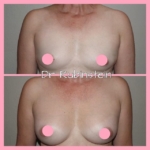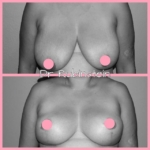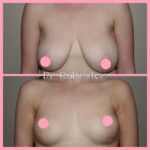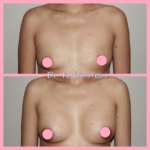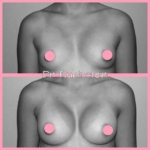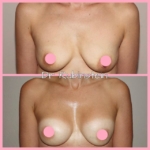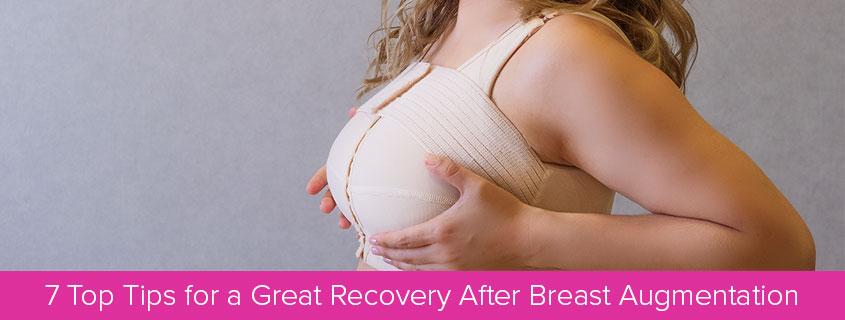
Recovery after Breast Augmentation with Dr Craig Rubinstein, Specialist Plastic Surgeon and Breast Expert in Melbourne
Did you know that around the world, more than 70% of women are unhappy with how their breasts look? Many women consider breast cosmetic surgery as the logical solution – and for good reason. Not only does a breast augmentation make your breasts larger, it can also make them look perky and fuller. Here are some tips for recovery after breast augmentation.
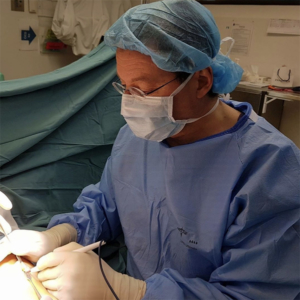
Below are Dr Craig Rubinstein’s tips to ensure you have the best possible recovery, allowing you to enjoy great results – as soon as possible!
Breast Augmentation is a procedure that is done under general anaesthesia. According to Dr Rubinstein, the first week, especially the first three to five days, can be the most uncomfortable. Pain, bruising and swelling is at their peak during this time. After a week, any sutures or drains (if used) will be removed, and you’ll start to notice that most of the pain, bruising, and swelling have reduced significantly.
“Most women are comfortable enough to return to office work and light duties at the 7 to 10-day mark.”
In the few weeks following your Breast Augmentation, the pain, bruising, and swelling will decrease. When the time is right your surgeon will encourage you to ease back into your normal daily routine. However, you should hold off on any strenuous activities, jobs and exercise for a minimum of three weeks, if not until you have made a full recovery. Dr Rubinstein will advise you on your individual situation and healing.
“It takes six to eight weeks to fully recover from your breast enhancement, but you’ll be able to enjoy the ‘perks’ of your new breasts a lot sooner.”
– Dr Craig Rubinstein
Why Do Bruising and Swelling Happen After Breast Augmentation?
Bruising and swelling is natural and a healthy response after a certain level of breast tissue manipulation and you should expect them after your cosmetic surgery. Bruising also occurs as a result of incisions and other adjustments made in the breast tissue.
The extent and duration of bruising and swelling after breast enhancement correlate with the extent of the surgery done, how much tissue is removed, how well you follow your instructions and wearing of garments. For most patients, bruising and swelling reach their peak three days or so following surgery. A significant amount of swelling will start to decrease a week after, and any remaining bruising will dissipate over time along with associated discomfort.
Bruising and swelling are the major contributors to your overall discomfort following your surgery. Unfortunately, they can last up to several weeks after your procedure, despite them waning in intensity with time.
Here are Dr Craig Rubinstein’s top 7 Tips to Deal for a Great Recovery after Breast Augmentation
1. Compression Garments
After waking up from your Surgery you’ll most likely notice you are wearing a compression bra. The compression provided by support bras, tapes, or binders/bandages helps accelerate the healing process and is absolutely necessary for the first month or so following your breast surgery procedure. Compression can prevent bleeding and stop blood from seeping out of your blood vessels to underneath your skin, and thus reduces your bruising. It also reduces swelling by promoting blood circulation to vital areas and flushing out chemicals that accumulate near your breast surgery incision sites. This further speeds up your healing process after your surgery.
2. Cold Compresses
In the first 3 days after your Breast Augmentation, apply cold compresses like towel-covered ice packs or bags of frozen peas on your surgical site to reduce swelling. Do so at 15 minutes intervals, with 20 minutes breaks in between, several times a day. The cold will cause your blood vessels to constrict, limiting fluid and blood leakage. This not only decreases your swelling but also decreases the size and spread of your bruises. Take care to avoid applying any cold compresses directly onto your Breast Augmentation incisions. This can cause severe irritation to your sensitive skin.
3. A Good Night’s Sleep
Having good sleep hygiene is an integral part of any cosmetic procedure recovery process. Good sleep hygiene does not only involve having your eight hours of sleep nightly but also depends on the position you sleep in. In the first six weeks following your cosmetic breast surgery. Your plastic surgeon will instruct you to sleep on your back, with your upper body elevated at a 30 to 45 degrees angle for safe and speedy healing. This position allows your breasts to be in a relaxed position, with minimal straining on your incisional sites. It causes your blood to shift away from your tender new breasts, not only reducing your bruising and swelling in the process but also alleviating any pain or soreness felt post breast surgery.
4. A Healthy Diet
Maintaining a healthy well-balanced diet is essential for your body’s healing process after Breast Augmentation. This includes restricting your salt intake, which can otherwise cause your body to retain fluid, worsening both your bruising and swelling.
Having a diet rich in Vitamin K is also important, as it encourages your blood to become “thicker”, thus preventing any further bleeding and worsening bruises. Leafy greens such as spinach and kale are prime examples of Vitamin K-rich foods.
5. Hydration
It may come as surprising but drinking lots of water and staying hydrated actually help manage swelling after breast surgery. The more you drink, the less the need for your body to trap water inside its tissues. Hydration also enhances your blood circulation, helping nutrients and blood to reach your injured breast tissue for a faster recovery. We encourage patients to drink 2 litres of water daily after their Breast Augmentation.
6. Medication
After your Surgery, your plastic surgeon will prescribe you a list of medications and supplements that need to be taken. Other than pain relief medication, this list may include Arnica and Arginaid. Arnica, also known as “wolfsbane” is a herb-derived tablet. It has been shown to decrease both bruising and swelling in the week following your cosmetic breast surgery. Arginaid on the other hand is an oral supplement that contains Vitamin C, E, and Zinc.
7. Red Light Therapy
Red light-emitting diode (LED) therapy helps breakdown bruises faster for those who wish for faster recovery following Breast Augmentation. Studies have shown that LED phototherapy decreased the time of bruising resolution up to half compared to those who opted without it. It does so by penetrating your skin tissue layers and encouraging the formation of new blood vessels.
Further Reading about Recovery after Breast Augmentation
- Normal Recovery after Breast Augmentation by Dr Mark Doyle Gold Coast plastic surgery
- Plastic Surgery Risks and Complications by Dr Guy Watts
- Recovery after Breast Augmentation Surgery by Dr Michael Kernohan Western Sydney
- Exercising After Breast Augmentation Surgery by Dr Carmen Munteanu
- FAQs about Breast Augmentation by Bish Soliman
- Augmentation Mammoplasty (Breast Augmentation) by Dr Jake Lim
- What is Breast Augmentation Surgery? – Anca Breahna
About Dr Craig Rubinstein Specialist Plastic Surgeon
Dr Craig Rubinstein has a great passion for his profession. Along with his team, Dr Rubinstein works tirelessly to deliver the very best in breast and tummy surgery. Word of mouth is the best form of advertising. As a result, Dr Rubinstein and his team strive to do everything possible, not only for your surgery but during your recovery journey.

